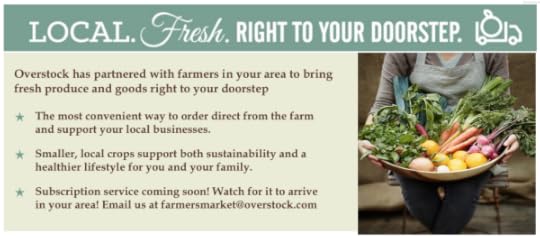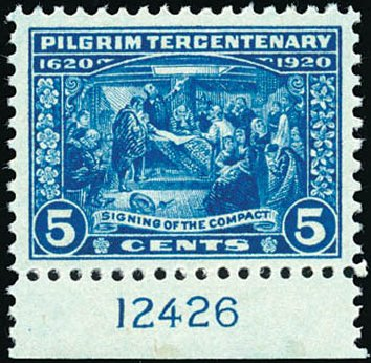Josh Kilmer-Purcell's Blog, page 31
December 8, 2015
Five Beautiful Things
Gingerbread Dreams
I tend to like paintings that push the boundaries of reality and make the viewer dream a little. American painter Will Cotton is an artist who creates elaborate worlds out of sweet confections and is known worldwide thanks to the album cover he painted for Katy Perry’s hugely successful album Teenage Dream. His sugary wildernesses are filled with sugarplum mountains, lollipop forests, caramel rivers and gingerbread chalets. It may all sound rather sweet and twee, but the artist brings a kind of edge to the paintings that keeps them from slipping into the world of children’s art. Many of the landscapes seem slightly dark. Some of the gingerbread houses he paints appear ruined or abandoned to time behind a scrim of mysterious mist. Below is a selection of his work – a series of his fantastical gingerbread chalets. His paintings make me want to step inside and explore the confectionery worlds he depicts, and maybe take a nibble or two. Click here to see more of his work.
December 7, 2015
It’s a Wrap
All together now: “Brown paper packages, tied up with string…”
Yes, brown paper packages are some of our favorite things. For reasons inexplicable, the holidays have become gaudy—an army of jolly Santas and snowmen marching across your gifts. We suggest turning down the noise level, switching out the patterned gift wrap and bows for butcher paper and baker’s twine. Here are some of our favorite idea for how to wrap simply, but with style, using plain brown kraft paper.
A sprig of rosemary, pine or sage tucked under the string lends color and a subtle fragrance.
Instead of elaborate gift tags we like to use mailing tags, or a simple rectangular stamp.
Write a Christmas memory right on the Kraft paper. “Remember that Christmas when we both had the flu, but Mom and Dad let us try out our new sled anyway?”
Sketch a little portrait of the recipient right on the paper —even if you’re not an artist. It will give your friend a good laugh.
Buy vintage Christmas cards at the flea market or on eBay. Cut a card at its seam, and glue it to the paper for a fun gift tag.
This idea appears in the Beekman 1802 Almanac, to get your autographed copy of the premier issue, click here
The Art of Bulb Forcing
There is something delightfully counter-intuitive about seeing a fragrant hyacinth flowering in January when conditions outside could not be more hostile. Although you can trick any bulb into thinking it is spring, few are as easy to coax into life as the hyacinth, which can be forced in water in specially designed bulb vases. The world’s most enthusiastic bulb forcers were the Victorians, who inherited the fever from the Dutch (William Beekman’s ancestors) across the water and created an entire industry around the practice. You can still find
handblown 19th century hyacinth vases on eBay or at antique stores for a decent price.
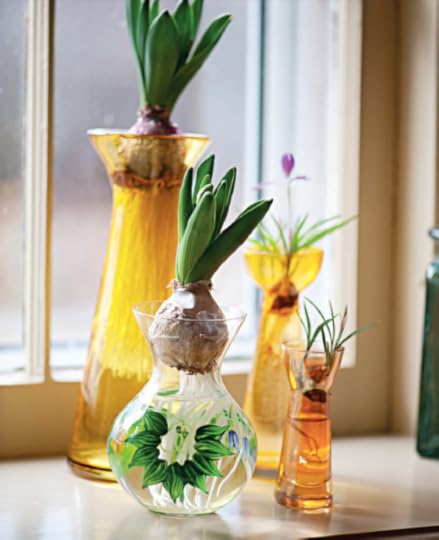

<
>
You don’t need much more than a refrigerator, but keep in mind that bulbs have to be stored there for several months, so the number you force may depend on how much room you want to set aside for your winter greens.
SIX EASY STEPS for FORCING BULBS
(1) Hyacinth bulbs require 8 to 14 weeks of chilling, and 2 to 3 weeks to bloom, although exact timing will depend on the cultivar. The
pink and popular Anna Marie requires only 8 weeks of chilling, for example. If you wantflowers in February, place the bulbs in the
fridge by the end of October. If you’re in a hurry, try grape hyacinths or crocuses, which can be chilled for as little as 8 weeks.
(2) Your bulbs should be slightly smaller in diameter than your vases so that they sit snugly in the neck.
(3) Fill the vase with water, and then place the bulb in the top. The water should just reach, but not touch, the base of the bulb.
(4) When roots have developed, and shoots are between 1 ½ and 2 inches long, you can remove the bulbs from the fridge and place
them, initially, in a semi-dark space.
(5) Move the bulbs progressively to a brighter and warmer place. If leaves start growing faster than the flowers, move the vases to a cooler
spot and cover for a day or two.
(6) Once they’ve flowered, you can plant hyacinth bulbs in the ground, though it may take a year or two to see them in bloom again.
This article appears in the Beekman 1802 Almanac. To get your autographed copy, click here
December 2, 2015
The Holiday Marathon
Making it through the holiday season is like running a marathon.
In the first part of the race, the heart rate of marathon runners climbs to about 140 beats per minute (The holidays are just so exciting!). The body relies on carbohydrate fuel in the form of glycogen, manufactured by the liver (And c’mon, both carbs and a good liver can be essential parts of holiday enjoyment…).
About halfway through the race is the point most runners hit “the wall” (Sound like the time on Christmas Eve when it’s past midnight, and you are wrapping gifts?). The body’s glycogen stores are now exhausted, and the muscles must rely on the breakdown of fat.
When your body crosses over from an aerobic state to an anaerobic state, it’s suddenly operating without enough oxygen to satisfy the muscles and cells screaming out for it (Sing along: “Hurry, Christmas/Hurry fast…”). This is when the “runner’s high” occurs: the euphoric feeling from pure mental and physical exertion.
Science has shown that the body releases similar endorphins when we feel happy, make others feel happy… and when we give gifts!
Sure, there is a moment in every marathon when the runner may ask, “Why am I doing this?” (A question that might sound familiar this time of year) But the high is worth it. (And happy holidays are, too.)
The theme for this year at the flagship Beekman 1802 Mercantile in Sharon Springs, NY, is the holiday marathon and is inspired by vintage sports memorabilia.
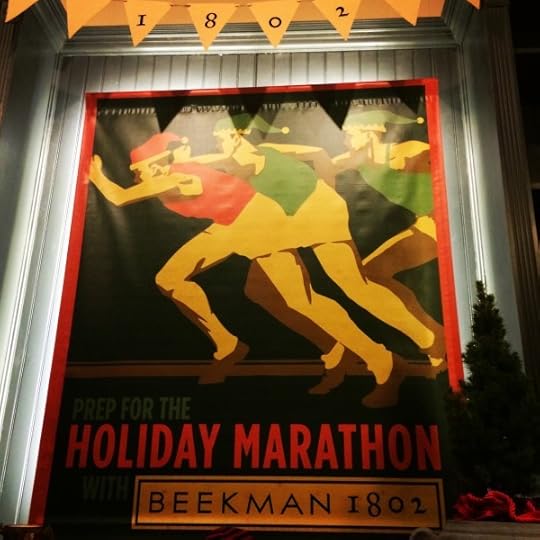






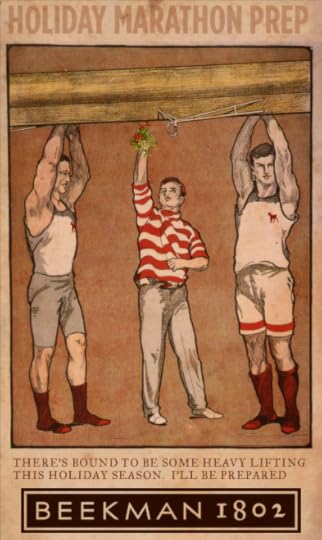




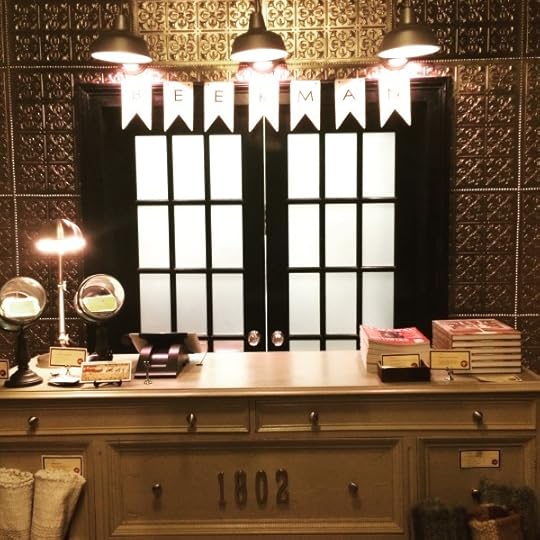

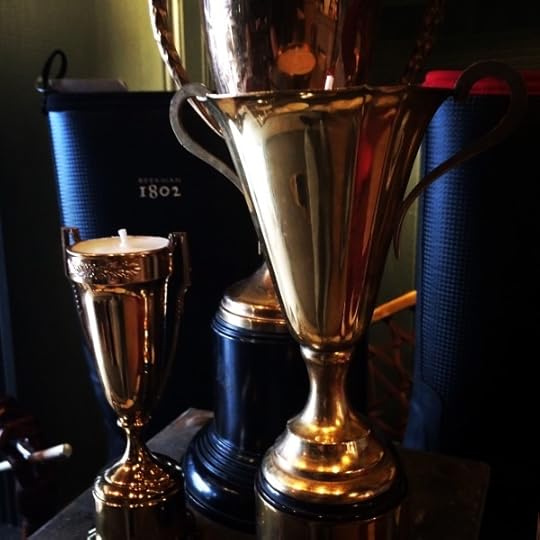
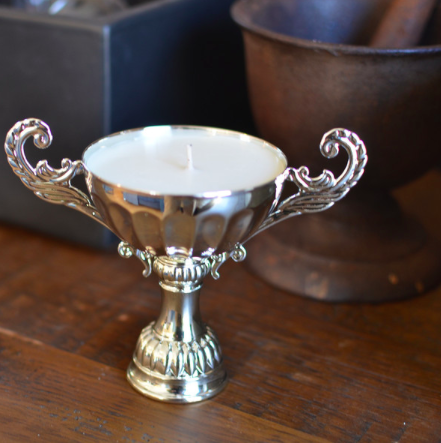
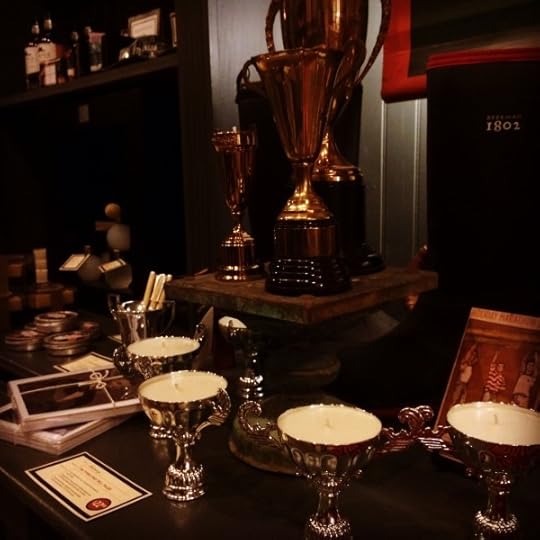



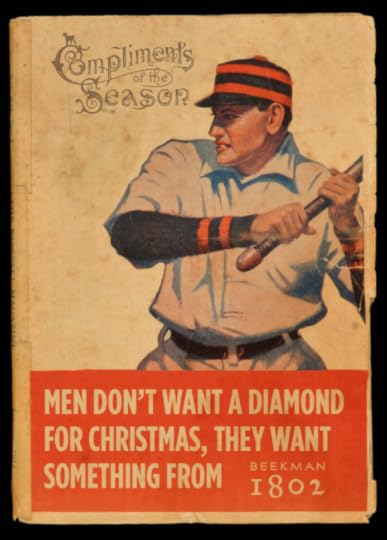

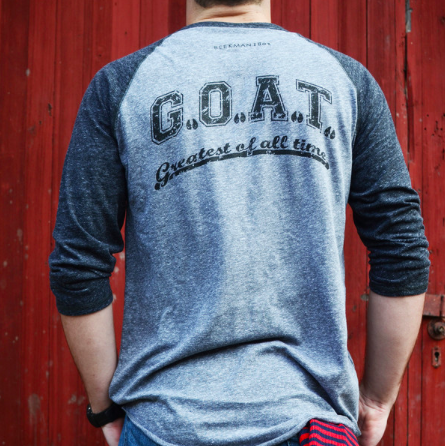
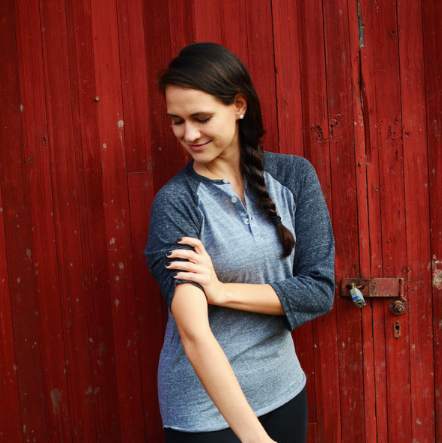


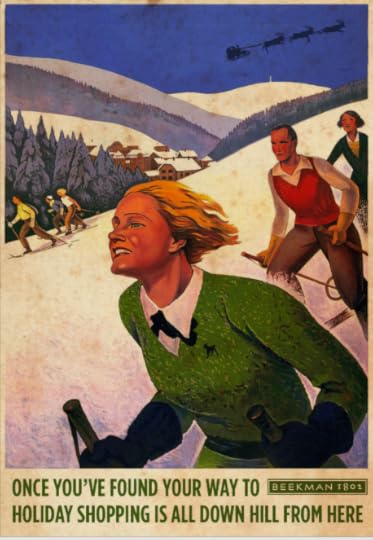
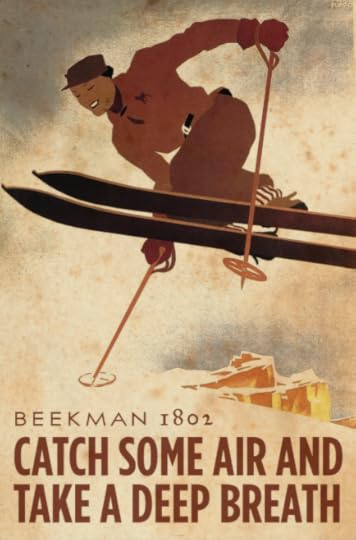
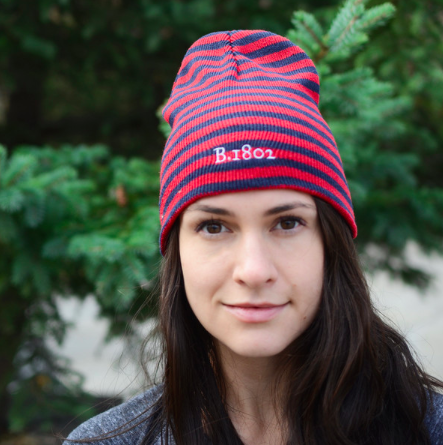



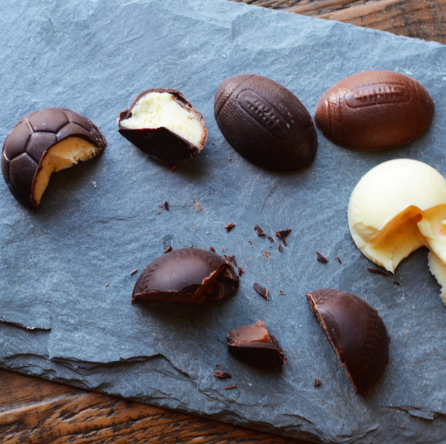





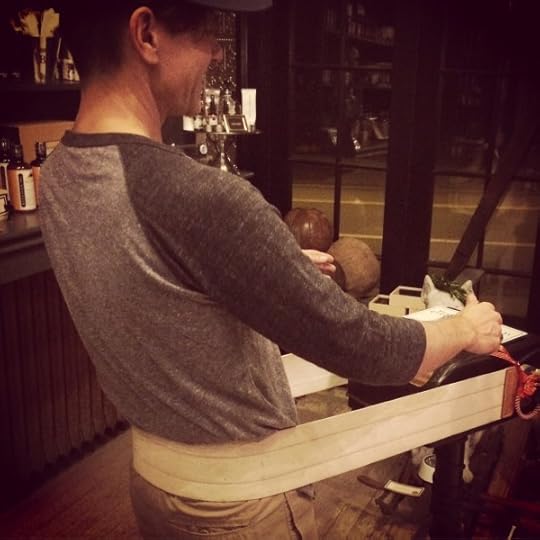




<
>
Shop the holiday Beekman 1802 Mercantile by clicking here
December 1, 2015
How does the Farmers Market at Overstock.com work?
You know we have a passion for helping small farms try new and different approaches to farming. But in order to succeed, they need new and different channels for selling what they produce. So when Overstock.com asked us to help them find new farmers for their online Farmers Market we were super excited. And super curious. How could a large, online retailer offer farm-to-door service? And how could small farms take part? So, we took the goat by the udder, and found the right person to answer all of our questions…Shelly Olsen, Buyer for Farmers Market at Overstock.com.
Why did Overstock.com start their Farmers Market? Our CEO, Patrick M. Byrne, felt Overstock.com needed to use its advanced platform to offer Americans a convenient way to access better food choices. By offering a local assortment of fresh products that can be delivered right to the customer’s door, it makes healthy eating more attainable.
Why did Overstock feel it was important to add Farmers Market to all the rest of the things they offer? com has spent 16 years perfecting its search engine and marketing techniques. We realized we could use these efforts to supercharge the CSA model. These search capabilities help shoppers find exactly what they’re looking for; whether that’s a couch, a diamond ring, a pet or farm-fresh produce.
How many farms are you working with right now? We are partnering with over 200 different farms, ranches, bakeries and artisan producers across the US.
What kinds of products can we find on Overstock’s Farmers Market? Through our marketplace you can shop everything from fresh local produce and grass-fed meats to artisanal cheeses, gourmet chocolates, fresh baked goods, coffee, snacks, DIY kits, sprouting seeds, even chicken coops!
Was it easy to find the farms? How did you find them? For some of the larger more established farms, it was easy to find and get in touch with them. But for our smaller family-run farms, it took a lot of effort; many of these farmers do not have websites or easily accessible contact information. Word-of-mouth, referrals, and a lot of digging helped make connecting with these farms possible. We hired a wonderful sales and research team to help us locate and network with farms of all sizes across the country.
Would you like to work with more small farms? If so, how can they reach out to you? Yes, we are always eager to work with new farms and food artisans. Part of what makes our store so unique is that we partner with family farms and small businesses to provide customers with hand-curated assortments they may not find elsewhere. If a farm or specialty food purveyor is interested in working with us they can email: farmersmarket@overstock.com and someone from our buying team will follow-up on these inquires.
Any fun stories you’ve experienced with the farms in the program? We had the great opportunity earlier this year to visit one of our local farm partners here in Utah. The whole team took a fieldtrip to Bell Organic Farm to help sow this year’s crop. Together we planted several varieties of peppers and eggplant that eventually yielded over 5 tons of organic produce. It was eye-opening to experience how rigorous and hands-on it truly is to grow food for a community. It is a labor of love for these farmers, and it reminded us how valuable locally grown fruits and vegetables are.
How have your shoppers reacted? We’ve received a lot of positive feedback from customers who have enjoyed the convenience of ordering their local CSA bundles online. But it has been a learning experience for us as well as our customers. Since our platform supports small local farms, our local delivery bundles are built just like those you would typically see at your local CSA (community supported agriculture) program. This means that the produce is sourced either locally or regionally, reducing the amount of food miles traveled from farm to table. The produce is picked when the order is placed, so you’ll often see different items in each bundle depending on the season. Additionally, we do not discriminate against cosmetically imperfect produce, so customers may see charmingly misshapen fruits and vegetables pop up from time to time. In fact, we are partnered with a great group out of Baltimore, Hungry Harvest, who specialize in imperfectly delicious produce to help reduce food waste in their communities. It is important to us to not only provide convenient access to healthy, locally-raised food, but to also do our part in helping reduce food waste across the US.
What makes you different from other online grocery retailers? We are all about transparency and we value telling our partners stories. We have worked hard to build meaningful relationships with each and every one of our partners, and we take pride in their stories and sharing them with a wider customer base. We also provide extensive support with training on assortment ideas, product copy and photos to help them build a unique shopping experience. We handle all of the customer service and marketing so they can focus on what they do best, producing delicious food. We also provide our partners with three different platforms to accommodate their needs: local delivery, regional delivery, and drop ship. Our local delivery program is designed so that customers may shop what is available in their specific zip code. Our partners in this program are then responsible for hand-delivering their own products, so you get the chance to meet the folks growing and crafting your food. Regional delivery is also a zip code-restricted program, but partners have the opportunity to ship products via 2-day ground shipping making their assortments available to a slightly larger customer base. The drop ship program is a traditional relationship where customers may shop a wide range of products from small producers all over the US and get them delivered right to their doorstep. We also offer an ever-growing collection of recipes to inspire creative cooking and eating adventures.
We’d like to thank Shelly for answering our questions. If you’re a small farm and want to sell on Overstock.com, send them an email! (farmersmarket@overstock.com) And if you want to see what’s available from Overstock’s Farmers Market in your area, click here.
November 30, 2015
Five Beautiful Things
Working for a company like Anthropologie means being surrounded by creativity, inspiration and beauty. When I go to work every day it is like going to a fantasy land of beautiful ideas made real. This is especially true during the holiday season when the window displays and the in-store visual concepts come together to create something truly magical. For the windows this year, Anthropologie was inspired by Scandinavian towns and European night markets. To add a festive twist, the buildings were made to look like gingerbread confections, complete with piped-icing trim, gumdrop details and wafer rooftops. Below are photos of the windows at the flagship Anthropologie store at the Rockefeller Center in New York City. I hope they make you smile! Click here to watch a behind-the-scenes video of how the windows were made. Each store has a display coordinator (or team of display coordinators) who realizes the vision created by head office. It’s a lot of work and requires an enormous amount of talent and craft, but the results are always well worth it.
November 28, 2015
Menfolk

c. 1900 Glass plate negative. Two farmers stand together outdoors. The farmer on the left wears a long-sleeve shirt and dark – colored tie under well-worn overalls. The left strap of the overalls is under the man’s left arm. He also wears a newsboy cap. Over his right shoulder is a scythe. He holds the handle with his right hand. The farmer on the right wears a long-sleeve, pinstripe shirt with collar stay, wool pants with suspenders and a brimmed hat. He also may be wearing a pocket watch on a chain. Over his left shoulder rests a hay fork which he holds with his left hand. In his right hand, he holds onto a squirming cat that lays against his left side. An orchard is in the background.
Last year, we were named to the Board of Trustees of the Farmers’ Museum in Cooperstown, NY. The mission of the museum is to cultivate an understanding of the rural heritage that has shaped our land, communities and American culture.
One of our favorite collections of the museum is the vast photo archive.
Plowline: Images of Rural New York is a collecting initiative. The Farmers’ Museum, with the generous support of the Gipson Family, is actively assembling original photography that documents changes in agricultural practice, rural life and farming families in New York State from the 19th century through the present.
Each week on Beekman 1802 we’ll highlight a photo from the collection that not only depicts where WE come from but where we ALL come from.
To learn more about the museum or plan a visit on your next trip to Sharon Springs, click here
November 21, 2015
Five Beautiful Things
The Big Bird
One of America’s founding fathers, Benjamin Franklin, fought hard to make the wild turkey the official national bird of the United States. It lost out to the bald eagle, another native bird, whose talons, noble beak and fierce scowl proved a tad more intimidating.
Nonetheless, the turkey has a day all its own: Thanksgiving! No one knows exactly how or when the turkey became so closely associated with this American holiday, but there are several theories worth noting. Some historians believe wild turkey was served at the first Thanksgiving in 1621, not beef, when settlers dined with the Wampanoag Indians in celebration of peace, bounty and unity. Others believe it was Queen Elizabeth the First who inspired turkey on the menu. When the British foiled a Spanish plot to invade England in the 16th Century, it is said that the queen was so pleased she ordered a second goose be cooked and served at the palace that night. English settlers in America, inspired by the queen’s actions, may have followed her lead by dining on turkey instead.
By the mid-1800s, turkey was considered the traditional bird of Thanksgiving. Early postcards and paintings on dinnerware suggest turkey played the starring role at the Thanksgiving table, as depicted by Norman Rockwell’s famous 1943 painting, Freedom From Want. The painting was inspired by Franklin D. Roosevelt’s 1941 State of the Union Address, titled Four Freedoms.
Today, the turkey enjoys a kind of ubiquity and popularity at holiday time that no other bird can claim. In honor of this, I’ve selected five images that depict turkeys artistically, from oil paintings to coffee cream!
Happy Thanksgiving!
An oil painting by Jason Tako
Norman Rockwell’s Freedom From Want
Turkey froth on a cup of jo
One of Martha Stewart’s Staffordshire dinner plates
A Thanksgiving postcard from the early 1900s.
November 17, 2015
Fragrant Greenery Runner
While we love a good centerpiece, sometimes they inhibit good dinner conversation. Invariably they block the eye-line of a few of your guests. Especially the shorter ones. (Brent hates that.)
Recently, at a large press event, we had a runner made of fresh greenery and herbs to stretch the entire length of the table. It was incredibly festive, and even better…incredibly fragrant! By nestling the hot serving dishes in the greens after they were passed, the warmth of the plates released the herb & evergreen natural oils.
Below is a list of great greens with wonderful fragrance to use on your table (avoid floral scents like lavendar since they may clash with the scent of the food.) A great way to get large bunches of inexpensive herbs is to visit your local farmers market. If you give your local herb farmer enough notice, they may also be willing to negotiate a bulk price with you. (Note, always use the freshest herbs and greens you can find, and never place a candle with an open flame in the greens.)
Fragrant evergreens:
Cedar
Fir
Juniper
Balsam
Fragrant herbs & leaves:
Rosemary
Thyme
Sage
Lemon Verbena
bay leaves
lime leaves
Take You Out to the Wood Shed

c. 1915 Photographic Negative. A man sits at the entrance to a wood shed on the Duroe-Dell Farm in New Berlin, New York. He is lighting a tobacco pipe. Behind him and to the left is an upside down milk can with the lid on top of it.
Last year, we were named to the Board of Trustees of the Farmers’ Museum in Cooperstown, NY. The mission of the museum is to cultivate an understanding of the rural heritage that has shaped our land, communities and American culture.
One of our favorite collections of the museum is the vast photo archive.
Plowline: Images of Rural New York is a collecting initiative. The Farmers’ Museum, with the generous support of the Gipson Family, is actively assembling original photography that documents changes in agricultural practice, rural life and farming families in New York State from the 19th century through the present.
Each week on Beekman 1802 we’ll highlight a photo from the collection that not only depicts where WE come from but where we ALL come from.
To learn more about the museum or plan a visit on your next trip to Sharon Springs, click here










